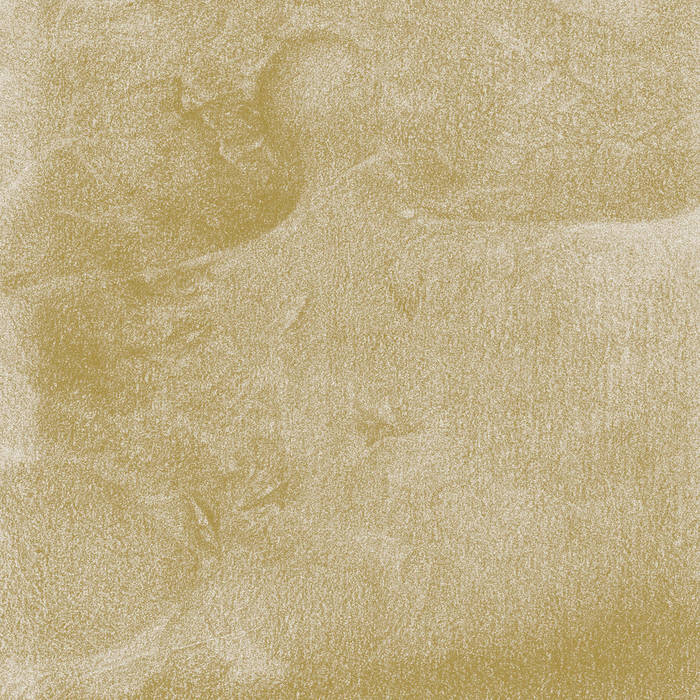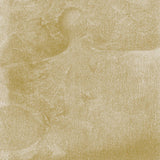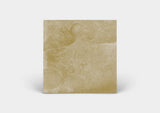Quickview
{"id":8073118449914,"title":"Eugene Carchesio + Adam Betts \/\/ Circle Drum Music LP [COLOR \/ BLACK]","handle":"eugene-carchesio-adam-betts-circle-drum-music-lp-color-black","description":"\u003cp\u003eオーストラリアの実験音楽家Eugene CarchesioとイギリスのパーカッショニストAdam Bettsが、2023年11月にオーストラリアの実験レーベルroom40からリリースした共作レコードです。\u003c\/p\u003e\n\u003cp\u003eパルスとリズムに焦点を当てたミニマル・ストレンジビーツ21曲を収録。DLコード付属。\u003c\/p\u003e\n\u003cp\u003e以下、レーベルオーナーLawrence Englishによる解説です。\u003c\/p\u003e\n\u003cp\u003e\u003cem\u003e\"時折、誰も予想できないような形でアイデアが披露されることがある。オーストラリアのEugene Carchesioとイギリスの\u003cmeta charset=\"utf-8\"\u003eAdam Bettsによるこの録音は、そのような予期せぬプレゼンテーションのひとつである。\u003c\/em\u003e\u003cbr data-mce-fragment=\"1\"\u003e\u003cbr data-mce-fragment=\"1\"\u003e\u003cem\u003e数年前、\u003cmeta charset=\"utf-8\"\u003eEugeneは、今や伝説となった彼のサークルミュージックシリーズの軌道上にある録音集を私に渡してくれた。その録音は、\u003cmeta charset=\"utf-8\"\u003eEugene独特のやり方で、ミニマリズムの深く揺るぎない感覚に根ざした強烈なリズムの質を保っていた。\u003cmeta charset=\"utf-8\"\u003eEugeneは、わずかな素材から小さな宇宙を作り出す術を持っている。しかし、彼はそれをミックスし、作品に何か予想外のものを加えることを考え、ドラムを加えることについて尋ねた。\u003c\/em\u003e\u003cbr data-mce-fragment=\"1\"\u003e\u003cbr data-mce-fragment=\"1\"\u003e\u003cem\u003eほぼ同じ瞬間に、私は、幸運にももう10年以上もお付き合いしている\u003cmeta charset=\"utf-8\"\u003eAdam Bettsの素晴らしい仕事を思い出していた。私たちはBad Bonneで初めて顔を合わせ、その後トビリシでスクウェアプッシャーと共演した。\u003c\/em\u003e\u003cbr\u003e\u003c\/p\u003e\n\u003cp\u003e\u003cem\u003eAdamが私の目に留まったのは、音楽とはまったく関係なく、彼がウェルシュ・トスの大会に出場し、見事な成績を収めたからだった。Adamがウェイトを持ち運ぶ姿を見て、このプロジェクトでEugeneと一緒に仕事をするのに最適な候補者だと思ったんだ。嬉しいことに、彼は承諾してくれた。\u003cbr\u003e\u003cbr\u003eその結果、抑制されたエネルギーとリズムの獰猛さという確かな感覚を持つ2人の素晴らしい音楽的スピリットが融合した。これは、最小限の動きがいかに巨大なエネルギーの波動を生み出すことができるかを並行して読み解くものである。また、注意深く耳を傾け、惜しみなく探求した記録でもある。\u003cbr\u003e\u003cbr\u003eこのような不思議な思考の軌道から音楽が生まれることは日常茶飯事ではないが、それが実現したときは祝福に値する。そのことを心に刻みながら、この素晴らしいエディションを皆さんと分かち合えることをとても嬉しく思う。\"\u003c\/em\u003e\u003c\/p\u003e\n\u003ciframe style=\"border: 0; width: 100%; height: 120px;\" src=\"https:\/\/bandcamp.com\/EmbeddedPlayer\/album=4214867450\/size=large\/bgcol=ffffff\/linkcol=0687f5\/tracklist=false\/artwork=none\/transparent=true\/\" seamless=\"\"\u003e\u003c\/iframe\u003e\n\u003cp\u003eレーベルその他作品は\u003ca href=\"https:\/\/tobirarecords.com\/collections\/room40\"\u003eこちら\u003c\/a\u003e\u003cspan\u003e \u003c\/span\u003e\/\/\/ Click \u003ca href=\"https:\/\/tobirarecords.com\/collections\/room40\"\u003ehere\u003c\/a\u003e to see more Room40 releases available at Tobira.\u003c\/p\u003e\n\u003cp\u003e----------------------------\u003c\/p\u003e\n\u003cp\u003eIncludes DL code. Available on 12\" black vinyl or 12\" purple swirl vinyl. \u003c\/p\u003e\n\u003cp\u003e\u003cstrong\u003eTracklist:\u003c\/strong\u003e\u003c\/p\u003e\n\u003col\u003e\n\u003cli\u003eA 01:52\u003c\/li\u003e\n\u003cli\u003eB 01:00\u003c\/li\u003e\n\u003cli\u003eC 00:37\u003c\/li\u003e\n\u003cli\u003eD 01:20\u003c\/li\u003e\n\u003cli\u003eE 03:00\u003c\/li\u003e\n\u003cli\u003eF 01:56\u003c\/li\u003e\n\u003cli\u003eG 01:28\u003c\/li\u003e\n\u003cli\u003eH 01:18\u003c\/li\u003e\n\u003cli\u003eI 01:00\u003c\/li\u003e\n\u003cli\u003eJ 00:58\u003c\/li\u003e\n\u003cli\u003eK 01:42\u003c\/li\u003e\n\u003cli\u003eL 01:12\u003c\/li\u003e\n\u003cli\u003eM 01:06\u003c\/li\u003e\n\u003cli\u003eN 01:07\u003c\/li\u003e\n\u003cli\u003eO 01:36\u003c\/li\u003e\n\u003cli\u003eP 02:13\u003c\/li\u003e\n\u003cli\u003eQ 02:28\u003c\/li\u003e\n\u003cli\u003eR 01:06\u003c\/li\u003e\n\u003cli\u003eS 01:12\u003c\/li\u003e\n\u003cli\u003eT 00:44\u003c\/li\u003e\n\u003cli\u003eU 01:02\u003c\/li\u003e\n\u003c\/ol\u003e\n\u003cp\u003e++\u003c\/p\u003e\n\u003cdiv class=\"tralbumData tralbum-about\"\u003eText by Lawrence English:\u003cbr\u003e\u003cbr\u003e\u003cem\u003e\"Occasionally ideas present themselves in ways that no one can expect. This recording from Australia’s Eugene Carchesio and the UK’s Adam Betts is one such unexpected presentation.\u003c\/em\u003e\u003cbr\u003e\u003cbr\u003e\u003cem\u003eA couple of years ago, Eugene passed me a collection of recordings that he explained were in the orbit of his now legendary Circle Music series. The recordings, in Eugene’s particular manner, maintained an intensely rhythmic quality rooted in a deep and unwavering sense of minimalism. Eugene has a way of making a tiny cosmos from just the barest of materials. He wondered though, about mixing it up and adding something unexpected to the pieces, and asked about some drums being added.\u003c\/em\u003e\u003cbr\u003e\u003cbr\u003e\u003cem\u003eAt almost exactly the same moment, I had been reminded of the amazing work of Adam Betts, who I have been fortunate to be in the orbit of for more than a decade now. We’d first met at Bad Bonne, sharing a bill, and then crossed paths most recently in Tbilisi where he was performing with Squarepusher.\u003c\/em\u003e\u003cbr\u003e\u003cbr\u003e\u003cem\u003eThe reason Adam was on my radar though was entirely unrelated to music and it was down to the fact that he had just participated in a welsh toss competition and done quite brilliantly\u003cspan class=\"bcTruncateMore\"\u003e. Somehow, watching Adam lug those weights made me think he’d be the perfect candidate to work with Eugene on this project. To my delight, he agreed.\u003cbr\u003e\u003cbr\u003eWhat results here is a melding of two incredible musical spirits, each of whom have an unerring sense of restrained energy and rhythmic ferocity. It is a parallel reading of how minimal motion can create giant affective waves of energy. It’s also a record of careful listening and generous exploration.\u003cbr\u003e\u003cbr\u003eIt’s not everyday music can emerge from such curious orbits of thought, but when it does it is a cause for celebration. With that in heart I am so pleased to share this incredible edition with you.\u003c\/span\u003e \"\u003c\/em\u003e\n\u003c\/div\u003e\n\u003cdiv class=\"tralbumData tralbum-about\"\u003e\u003cspan\u003e\u003c\/span\u003e\u003c\/div\u003e\n\u003cp\u003eArtist : Eugene Carchesio + Adam Betts\u003c\/p\u003e\n\u003cp\u003eLabel : Room40 \u003c\/p\u003e","published_at":"2023-11-11T07:26:04+09:00","created_at":"2023-11-08T10:54:20+09:00","vendor":"Tobira Records","type":"","tags":["lp","new","room40","strange beats"],"price":358800,"price_min":358800,"price_max":373500,"available":true,"price_varies":true,"compare_at_price":null,"compare_at_price_min":0,"compare_at_price_max":0,"compare_at_price_varies":false,"variants":[{"id":44745113567482,"title":"Black Vinyl","option1":"Black Vinyl","option2":null,"option3":null,"sku":"","requires_shipping":true,"taxable":true,"featured_image":{"id":40010153394426,"product_id":8073118449914,"position":3,"created_at":"2023-11-08T10:54:20+09:00","updated_at":"2023-11-08T10:54:22+09:00","alt":null,"width":1200,"height":850,"src":"\/\/tobirarecords.com\/cdn\/shop\/files\/eu3_37c4a4a1-bdd1-480c-a431-d6dcee939ceb.jpg?v=1699408462","variant_ids":[44745113567482]},"available":true,"name":"Eugene Carchesio + Adam Betts \/\/ Circle Drum Music LP [COLOR \/ BLACK] - Black Vinyl","public_title":"Black Vinyl","options":["Black Vinyl"],"price":358800,"weight":430,"compare_at_price":null,"inventory_management":"shopify","barcode":"","featured_media":{"alt":null,"id":32655583903994,"position":3,"preview_image":{"aspect_ratio":1.412,"height":850,"width":1200,"src":"\/\/tobirarecords.com\/cdn\/shop\/files\/eu3_37c4a4a1-bdd1-480c-a431-d6dcee939ceb.jpg?v=1699408462"}},"requires_selling_plan":false,"selling_plan_allocations":[]},{"id":44745113600250,"title":"Purple Swirl Vinyl","option1":"Purple Swirl Vinyl","option2":null,"option3":null,"sku":"","requires_shipping":true,"taxable":true,"featured_image":{"id":40010153459962,"product_id":8073118449914,"position":2,"created_at":"2023-11-08T10:54:20+09:00","updated_at":"2023-11-08T10:54:22+09:00","alt":null,"width":1200,"height":850,"src":"\/\/tobirarecords.com\/cdn\/shop\/files\/eu2_8580b95a-a6e7-4497-bfd3-7147f59a68c2.jpg?v=1699408462","variant_ids":[44745113600250]},"available":true,"name":"Eugene Carchesio + Adam Betts \/\/ Circle Drum Music LP [COLOR \/ BLACK] - Purple Swirl Vinyl","public_title":"Purple Swirl Vinyl","options":["Purple Swirl Vinyl"],"price":373500,"weight":430,"compare_at_price":null,"inventory_management":"shopify","barcode":"","featured_media":{"alt":null,"id":32655583871226,"position":2,"preview_image":{"aspect_ratio":1.412,"height":850,"width":1200,"src":"\/\/tobirarecords.com\/cdn\/shop\/files\/eu2_8580b95a-a6e7-4497-bfd3-7147f59a68c2.jpg?v=1699408462"}},"requires_selling_plan":false,"selling_plan_allocations":[]}],"images":["\/\/tobirarecords.com\/cdn\/shop\/files\/eu1_621880fd-e908-423f-89ac-d73c971908e3.jpg?v=1699408462","\/\/tobirarecords.com\/cdn\/shop\/files\/eu2_8580b95a-a6e7-4497-bfd3-7147f59a68c2.jpg?v=1699408462","\/\/tobirarecords.com\/cdn\/shop\/files\/eu3_37c4a4a1-bdd1-480c-a431-d6dcee939ceb.jpg?v=1699408462"],"featured_image":"\/\/tobirarecords.com\/cdn\/shop\/files\/eu1_621880fd-e908-423f-89ac-d73c971908e3.jpg?v=1699408462","options":["Color"],"media":[{"alt":null,"id":32655583838458,"position":1,"preview_image":{"aspect_ratio":1.0,"height":700,"width":700,"src":"\/\/tobirarecords.com\/cdn\/shop\/files\/eu1_621880fd-e908-423f-89ac-d73c971908e3.jpg?v=1699408462"},"aspect_ratio":1.0,"height":700,"media_type":"image","src":"\/\/tobirarecords.com\/cdn\/shop\/files\/eu1_621880fd-e908-423f-89ac-d73c971908e3.jpg?v=1699408462","width":700},{"alt":null,"id":32655583871226,"position":2,"preview_image":{"aspect_ratio":1.412,"height":850,"width":1200,"src":"\/\/tobirarecords.com\/cdn\/shop\/files\/eu2_8580b95a-a6e7-4497-bfd3-7147f59a68c2.jpg?v=1699408462"},"aspect_ratio":1.412,"height":850,"media_type":"image","src":"\/\/tobirarecords.com\/cdn\/shop\/files\/eu2_8580b95a-a6e7-4497-bfd3-7147f59a68c2.jpg?v=1699408462","width":1200},{"alt":null,"id":32655583903994,"position":3,"preview_image":{"aspect_ratio":1.412,"height":850,"width":1200,"src":"\/\/tobirarecords.com\/cdn\/shop\/files\/eu3_37c4a4a1-bdd1-480c-a431-d6dcee939ceb.jpg?v=1699408462"},"aspect_ratio":1.412,"height":850,"media_type":"image","src":"\/\/tobirarecords.com\/cdn\/shop\/files\/eu3_37c4a4a1-bdd1-480c-a431-d6dcee939ceb.jpg?v=1699408462","width":1200}],"requires_selling_plan":false,"selling_plan_groups":[],"content":"\u003cp\u003eオーストラリアの実験音楽家Eugene CarchesioとイギリスのパーカッショニストAdam Bettsが、2023年11月にオーストラリアの実験レーベルroom40からリリースした共作レコードです。\u003c\/p\u003e\n\u003cp\u003eパルスとリズムに焦点を当てたミニマル・ストレンジビーツ21曲を収録。DLコード付属。\u003c\/p\u003e\n\u003cp\u003e以下、レーベルオーナーLawrence Englishによる解説です。\u003c\/p\u003e\n\u003cp\u003e\u003cem\u003e\"時折、誰も予想できないような形でアイデアが披露されることがある。オーストラリアのEugene Carchesioとイギリスの\u003cmeta charset=\"utf-8\"\u003eAdam Bettsによるこの録音は、そのような予期せぬプレゼンテーションのひとつである。\u003c\/em\u003e\u003cbr data-mce-fragment=\"1\"\u003e\u003cbr data-mce-fragment=\"1\"\u003e\u003cem\u003e数年前、\u003cmeta charset=\"utf-8\"\u003eEugeneは、今や伝説となった彼のサークルミュージックシリーズの軌道上にある録音集を私に渡してくれた。その録音は、\u003cmeta charset=\"utf-8\"\u003eEugene独特のやり方で、ミニマリズムの深く揺るぎない感覚に根ざした強烈なリズムの質を保っていた。\u003cmeta charset=\"utf-8\"\u003eEugeneは、わずかな素材から小さな宇宙を作り出す術を持っている。しかし、彼はそれをミックスし、作品に何か予想外のものを加えることを考え、ドラムを加えることについて尋ねた。\u003c\/em\u003e\u003cbr data-mce-fragment=\"1\"\u003e\u003cbr data-mce-fragment=\"1\"\u003e\u003cem\u003eほぼ同じ瞬間に、私は、幸運にももう10年以上もお付き合いしている\u003cmeta charset=\"utf-8\"\u003eAdam Bettsの素晴らしい仕事を思い出していた。私たちはBad Bonneで初めて顔を合わせ、その後トビリシでスクウェアプッシャーと共演した。\u003c\/em\u003e\u003cbr\u003e\u003c\/p\u003e\n\u003cp\u003e\u003cem\u003eAdamが私の目に留まったのは、音楽とはまったく関係なく、彼がウェルシュ・トスの大会に出場し、見事な成績を収めたからだった。Adamがウェイトを持ち運ぶ姿を見て、このプロジェクトでEugeneと一緒に仕事をするのに最適な候補者だと思ったんだ。嬉しいことに、彼は承諾してくれた。\u003cbr\u003e\u003cbr\u003eその結果、抑制されたエネルギーとリズムの獰猛さという確かな感覚を持つ2人の素晴らしい音楽的スピリットが融合した。これは、最小限の動きがいかに巨大なエネルギーの波動を生み出すことができるかを並行して読み解くものである。また、注意深く耳を傾け、惜しみなく探求した記録でもある。\u003cbr\u003e\u003cbr\u003eこのような不思議な思考の軌道から音楽が生まれることは日常茶飯事ではないが、それが実現したときは祝福に値する。そのことを心に刻みながら、この素晴らしいエディションを皆さんと分かち合えることをとても嬉しく思う。\"\u003c\/em\u003e\u003c\/p\u003e\n\u003ciframe style=\"border: 0; width: 100%; height: 120px;\" src=\"https:\/\/bandcamp.com\/EmbeddedPlayer\/album=4214867450\/size=large\/bgcol=ffffff\/linkcol=0687f5\/tracklist=false\/artwork=none\/transparent=true\/\" seamless=\"\"\u003e\u003c\/iframe\u003e\n\u003cp\u003eレーベルその他作品は\u003ca href=\"https:\/\/tobirarecords.com\/collections\/room40\"\u003eこちら\u003c\/a\u003e\u003cspan\u003e \u003c\/span\u003e\/\/\/ Click \u003ca href=\"https:\/\/tobirarecords.com\/collections\/room40\"\u003ehere\u003c\/a\u003e to see more Room40 releases available at Tobira.\u003c\/p\u003e\n\u003cp\u003e----------------------------\u003c\/p\u003e\n\u003cp\u003eIncludes DL code. Available on 12\" black vinyl or 12\" purple swirl vinyl. \u003c\/p\u003e\n\u003cp\u003e\u003cstrong\u003eTracklist:\u003c\/strong\u003e\u003c\/p\u003e\n\u003col\u003e\n\u003cli\u003eA 01:52\u003c\/li\u003e\n\u003cli\u003eB 01:00\u003c\/li\u003e\n\u003cli\u003eC 00:37\u003c\/li\u003e\n\u003cli\u003eD 01:20\u003c\/li\u003e\n\u003cli\u003eE 03:00\u003c\/li\u003e\n\u003cli\u003eF 01:56\u003c\/li\u003e\n\u003cli\u003eG 01:28\u003c\/li\u003e\n\u003cli\u003eH 01:18\u003c\/li\u003e\n\u003cli\u003eI 01:00\u003c\/li\u003e\n\u003cli\u003eJ 00:58\u003c\/li\u003e\n\u003cli\u003eK 01:42\u003c\/li\u003e\n\u003cli\u003eL 01:12\u003c\/li\u003e\n\u003cli\u003eM 01:06\u003c\/li\u003e\n\u003cli\u003eN 01:07\u003c\/li\u003e\n\u003cli\u003eO 01:36\u003c\/li\u003e\n\u003cli\u003eP 02:13\u003c\/li\u003e\n\u003cli\u003eQ 02:28\u003c\/li\u003e\n\u003cli\u003eR 01:06\u003c\/li\u003e\n\u003cli\u003eS 01:12\u003c\/li\u003e\n\u003cli\u003eT 00:44\u003c\/li\u003e\n\u003cli\u003eU 01:02\u003c\/li\u003e\n\u003c\/ol\u003e\n\u003cp\u003e++\u003c\/p\u003e\n\u003cdiv class=\"tralbumData tralbum-about\"\u003eText by Lawrence English:\u003cbr\u003e\u003cbr\u003e\u003cem\u003e\"Occasionally ideas present themselves in ways that no one can expect. This recording from Australia’s Eugene Carchesio and the UK’s Adam Betts is one such unexpected presentation.\u003c\/em\u003e\u003cbr\u003e\u003cbr\u003e\u003cem\u003eA couple of years ago, Eugene passed me a collection of recordings that he explained were in the orbit of his now legendary Circle Music series. The recordings, in Eugene’s particular manner, maintained an intensely rhythmic quality rooted in a deep and unwavering sense of minimalism. Eugene has a way of making a tiny cosmos from just the barest of materials. He wondered though, about mixing it up and adding something unexpected to the pieces, and asked about some drums being added.\u003c\/em\u003e\u003cbr\u003e\u003cbr\u003e\u003cem\u003eAt almost exactly the same moment, I had been reminded of the amazing work of Adam Betts, who I have been fortunate to be in the orbit of for more than a decade now. We’d first met at Bad Bonne, sharing a bill, and then crossed paths most recently in Tbilisi where he was performing with Squarepusher.\u003c\/em\u003e\u003cbr\u003e\u003cbr\u003e\u003cem\u003eThe reason Adam was on my radar though was entirely unrelated to music and it was down to the fact that he had just participated in a welsh toss competition and done quite brilliantly\u003cspan class=\"bcTruncateMore\"\u003e. Somehow, watching Adam lug those weights made me think he’d be the perfect candidate to work with Eugene on this project. To my delight, he agreed.\u003cbr\u003e\u003cbr\u003eWhat results here is a melding of two incredible musical spirits, each of whom have an unerring sense of restrained energy and rhythmic ferocity. It is a parallel reading of how minimal motion can create giant affective waves of energy. It’s also a record of careful listening and generous exploration.\u003cbr\u003e\u003cbr\u003eIt’s not everyday music can emerge from such curious orbits of thought, but when it does it is a cause for celebration. With that in heart I am so pleased to share this incredible edition with you.\u003c\/span\u003e \"\u003c\/em\u003e\n\u003c\/div\u003e\n\u003cdiv class=\"tralbumData tralbum-about\"\u003e\u003cspan\u003e\u003c\/span\u003e\u003c\/div\u003e\n\u003cp\u003eArtist : Eugene Carchesio + Adam Betts\u003c\/p\u003e\n\u003cp\u003eLabel : Room40 \u003c\/p\u003e"}
![Natalie Beridze // Of Which One Knows LP [BLACK / COLOR]](https://tobirarecords.com/cdn/shop/files/on1_7feae78a-8719-45ce-80d4-fd2e81136a92_medium.jpg?v=1701421535)
![Beatriz Ferreyra // UFO Forest + LP [COLOR / BLACK]](https://tobirarecords.com/cdn/shop/files/ufo1_medium.jpg?v=1699408652)
![Eugene Carchesio + Adam Betts // Circle Drum Music LP [COLOR / BLACK]](https://tobirarecords.com/cdn/shop/files/eu1_621880fd-e908-423f-89ac-d73c971908e3_medium.jpg?v=1699408462)




